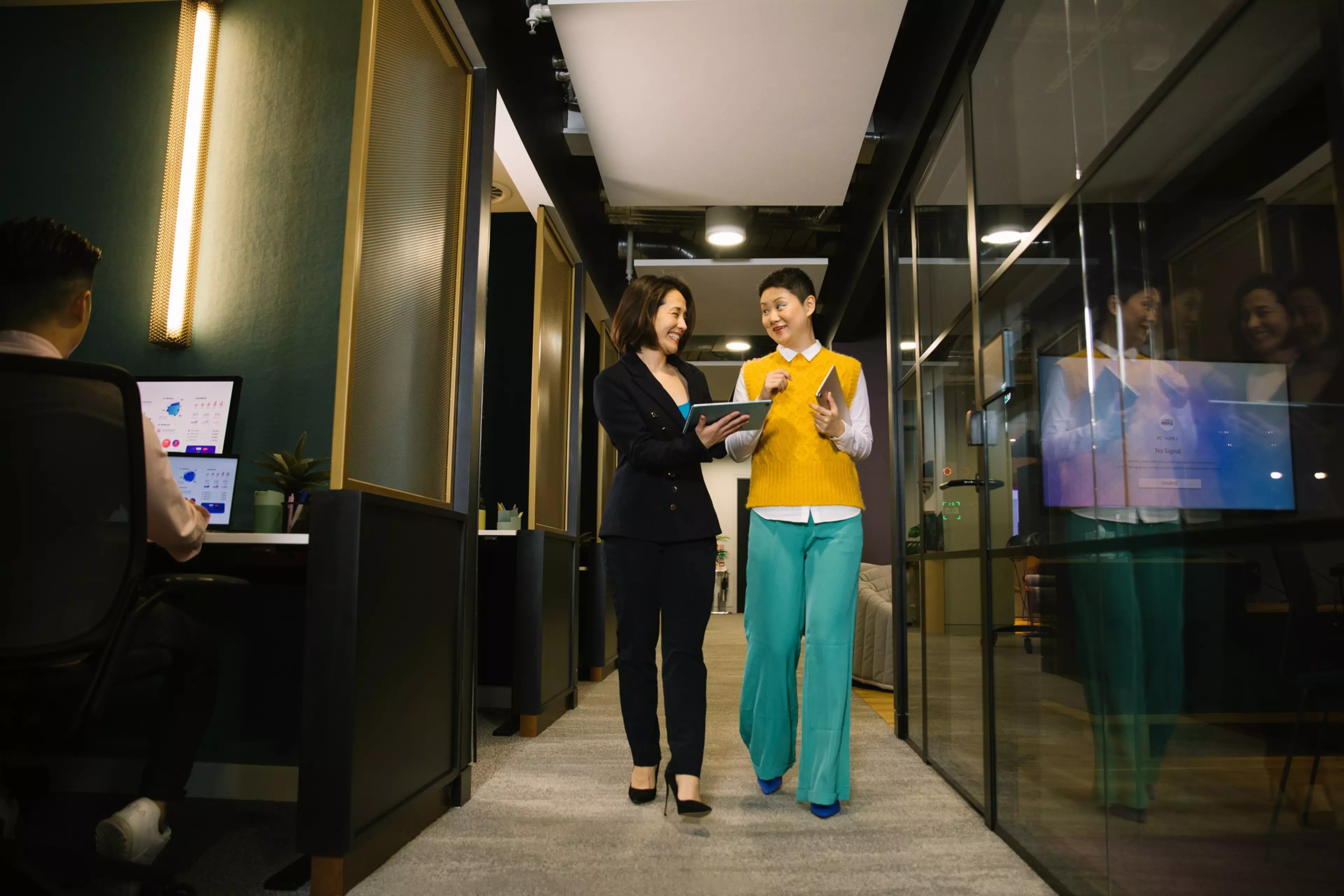In reality, every business/organisation is different and has its own unique requirements, so the questions at the heart of this are actually what suits you and your team’s requirements, how do social interactions facilitate your operations and growth, and how can digitalisation technology help you best achieve these goals.
Coping with the unexpected
The restrictions of the global pandemic were felt worldwide and were largely impossible to predict. Naturally some businesses fared better than others, those delivering purely online products/content (such as entertainment streaming platform Netflix for example) did particularly well, but most businesses had the challenge of a period of transition at some level or another.
As a seasoned digital workplace provider, Konica Minolta already had a considerable range of flexible online technology at its disposal, both in-house and to support customers. However, there were still big challenges to face in terms of the transition to new or adapted ways of working. Whilst home working had long been an option, Konica Minolta’s teams still had to adapt to being physically separated from each other and the familiarity of office interactions. This was even more noticeable for newly onboarded team members who missed out on their expected face-to-face introductions and ongoing interactions.
Like most businesses, the Konica Minolta team is now well seasoned in home and hybrid working. However, we must all now look closely at finding the best mix of digital tools for hybrid remote work along with physical office spaces for the social interactions and communications that foster innovation, problem-solving, and the evolution of any business.
Finding balance
The pandemic undoubtedly advanced the willingness to adopt and deploy digital systems to enable remote working for many businesses, some of whom had barely allowed their employees to use systems outside the office before – the financial sector being a key example. However, there is a significant difference between offering home working as a part-time option and it being enforced on your entire team on an ongoing basis due to external circumstances.
A successful hybrid remote work approach is about blending the benefits of remote working with those of a more traditional office-based setup. Naturally there are considerable benefits for many employees in working from home – there is no commute and its associated time and costs, and family/personal commitments can be balanced around workload.
However, there are also potential disadvantages too. Isolation can be a real issue for mental health and not everyone is fortunate enough to have a home that is set up for home working in terms of dedicated space and a reliable and suitable internet connection. The cost-of-living crisis in many parts of Europe has also exacerbated the costs of running home utilities all day as well.
Despite the potential negatives of the commute and inflexibility from a personal life perspective, the workplace also delivers considerable advantages. It is an ideal place for professional and social relationships to be forged and ideas shared in natural conversation and interaction. This is great for teambuilding and developing innovation, which are essential for any business.
It can be a considerable boost for people’s mental health in terms of comradery and support. It also enables employees to ‘disconnect’ from workplace obligations when they leave the building in the evening, something which can be a real challenge for home workers where their personal and professional time can blur.
Another potential issue from offering hybrid working as an option is that it can (inadvertently) divide a workforce unless carefully managed. If some team members choose to work remotely whilst others return to the office, it is essential to ensure they can all still work as a cohesive team. Whatever the physical location, everyone needs to be ensured the same opportunities, but also to be able to adopt the same work-ethic as everyone else.
The right tools for the job
Hybrid working is of course reliant on having the right digital technology in place to ensure it is reliable and practical to use. For most business this is a journey rather than a specific destination and is often referred to as ‘Digital Maturity’.
Most businesses already employ some level of digitisation of their systems and according to
Konica Minolta's “Digital Transformation” study, digital transformation is a top priority for 45% of companies. But it is worth considering if your business has the right remote working systems in place to deliver the flexibility that the team needs wherever they are working - since, according to
Konica Minolta's study "Top SMB IT Pain Points & Solutions", for nearly half of SMBs (49 percent), the lack of necessary employee hardware or software was a difficulty associated with home-based working. If employees struggle to access the information they need away from the office (or in doing so it compromises the security of data) then it's time for a rethink.
Considered choice
Along with utilising the right digital systems and increasing Digital Maturity, providing employees with choice and support is the key to successfully utilising hybrid working. Most businesses have found that when empowered and trusted, employees are very good at making the most appropriate choice as to where and how they work.
Konica Minolta has taken this successful approach and assists customers in doing the same for their employees, powering a better mix of collaboration and work/life balance. By ensuring your information systems are always updated and securely available to your team (wherever they work), it is much easier to find the perfect mix of remote and office-based hybrid working, ensuring that everyone is fully engaged in your business success goals.
For a free and no obligation assessment of your organisation’s Digital Maturity, please visit:
https://dx360.konicaminolta.co.uk/analytics-and-intelligence



